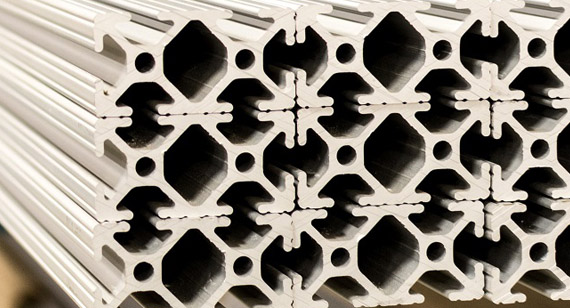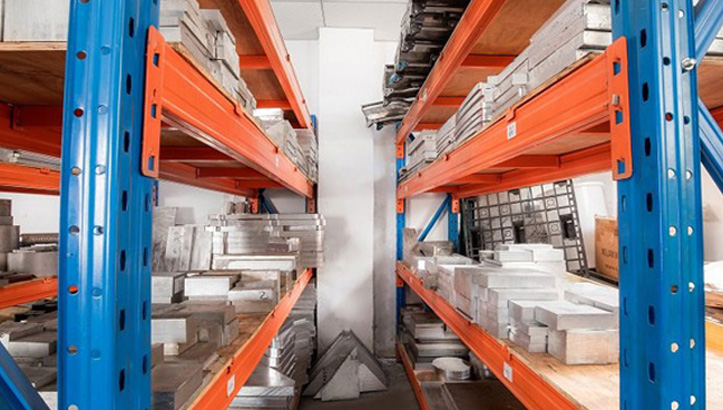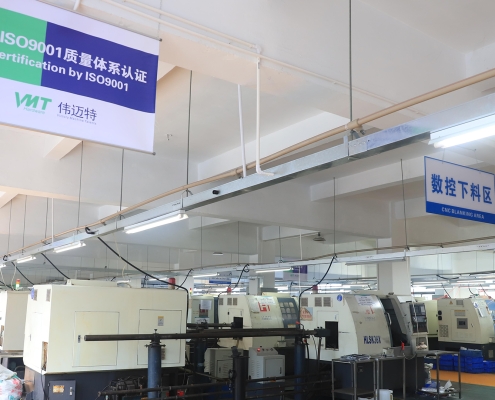What is 8020 Aluminum?
As a special type of aluminum alloy material, 8020 aluminum is widely used in the field of CNC machining parts manufacturing. Its unique chemical composition and physical properties make 8020 aluminum excel in various industrial fields. The alloy is mainly composed of aluminum, silicon, iron, copper, manganese, magnesium, chromium and other elements, combined in precise proportions to provide excellent mechanical properties and corrosion resistance. This article will explore the characteristics, strength, advantages and disadvantages, and applications of 8020 aluminum.
What is 8020 Aluminum?
8020 aluminum, also called 80/20 extruded aluminum or 80/20 frame aluminum, is a high-performance alloy consisting of 80% aluminum and 20% carefully balanced alloying elements. It delivers excellent mechanical properties and strong corrosion resistance while maintaining the lightweight characteristics of aluminum. Thanks to these advantages, 8020 aluminum is widely used across industrial applications where strength, durability, and weight reduction are critical.

Why is It Called 8020 Aluminum?
Aluminum alloy profiles usually appear in the market with “8020” or similar naming methods. The “80” and “20” here refer to the cross-sectional dimensions of the profile, such as 80mm in width and 20mm in height or thickness. However, they do not directly correspond to the percentage of alloying elements. Due to its specific size and performance, 80/20 aluminum alloy profiles are widely used in industrial automation, CNC machining, building frameworks and other fields.
Advantages of 8020 Aluminum
8020 aluminum is widely recognized for its combination of strength, corrosion resistance, and versatility. The following is the main advantages of 8020 aluminum:
| Advantage | Description |
|---|---|
| Excellent Mechanical Properties | Provides high tensile and yield strength, meeting the needs of demanding and high-load applications. |
| Strong Corrosion Resistance | Maintains stability in harsh environments such as high temperature, pressure, and chemically aggressive conditions. |
| Good Machinability | Easily processed through extrusion, forging, cutting, and other methods, improving production efficiency. |
| Lightweight | Lower density compared to many other metals, reducing overall equipment weight and enhancing energy efficiency. |
| Wide Range of Applications | Trusted across aerospace, energy, medical equipment, chemical processing, and marine engineering sectors. |
What Other Types of Aluminum Materials Are There?
Aluminum materials are divided into many types due to their diverse properties and wide range of applications.
-
Classification of Alloy Components.
Pure aluminum: With a purity of over 99.0%, it is known for its excellent electrical conductivity, plasticity, corrosion resistance and good thermal conductivity. It is often used in wires and cables, heat sinks, decorative parts, chemical equipment and other occasions that do not require high strength.
Aluminum-copper alloy: The strengthening element is copper, which not only enhances the strength and hardness, but also maintains good processing performance. It is suitable for the manufacture of automobile radiators, ship accessories, etc.
Aluminum-manganese alloy: Manganese is the main alloying element, which gives the material excellent corrosion resistance and formability. It is widely used in construction, transportation and packaging fields.
Aluminum-magnesium alloy: The addition of magnesium improves corrosion resistance, welding performance and fatigue strength, but it cannot be strengthened by heat treatment. It is commonly used in ships, pressure vessels and other fields.
Aluminum-magnesium-silicon alloy: With magnesium and silicon as the main alloying elements, it is one of the most widely used alloys. It has medium strength, good corrosion resistance and welding properties, and is suitable for a variety of construction and industrial uses.
Aluminum-zinc-magnesium alloy: also known as super-hard aluminum, it has extremely high strength and hardness, but relatively weak plasticity and processability. It is the preferred material for high-strength demanding fields such as aviation and aerospace.
-
Other Common Types of Aluminum.
Industrial aluminum profiles: including angle aluminum, flat aluminum, hexagonal aluminum, round tube aluminum, square tube aluminum, etc., used to build various structures and mechanical parts.
Architectural aluminum profiles: covering door and window profiles, curtain wall profiles and aluminum alloy plates, which are widely used in exterior walls, roofs and interior decoration in the construction field.
Decorative aluminum profiles: such as aluminum alloy photo frames, decorative strips, etc., used for exhibitions, decorative painting mounting and building exterior beautification.
Electronic aluminum profiles: including radiator aluminum profiles and aluminum alloy extruded tubes, specially designed for heat dissipation and shell structure of electronic equipment.

8020 Aluminum Price.
The price of 8020 aluminum alloy is affected by many factors, including market supply and demand, raw material costs, production and processing costs, and regional differences. These factors interact with each other, making the price of this aluminum alloy show significant differences at different time points, geographical locations, and transaction scales.
Therefore, when you need to understand the specific price of 8020 aluminum alloy, you must comprehensively consider the current market environment, cost structure, and regional characteristics to obtain the most accurate and practical quotation.
Common Uses and Applications of 8020 Aluminum
8020 aluminum is a high-strength, lightweight aluminum alloy profile. Its excellent mechanical properties and flexible processing characteristics make it widely used in industry and everyday life. It is suitable for structural frames, precision equipment, and automation systems.
1. Industrial Automation and Machinery Frames
8020 aluminum is often used in industrial automation equipment and mechanical structural frames. Its high strength and lightweight properties ensure stability while facilitating easy handling and repositioning. Common applications include conveyor supports, workbench frames, and machinery support columns. In these applications, 8020 aluminum meets the requirements for structural stability, durability, and modular assembly.
2. Laboratory and Precision Equipment Supports
In laboratory and scientific research equipment, 8020 aluminum is commonly used in supports and lab benches. Its corrosion resistance and ease of processing allow scientists and engineers to quickly build or adjust structures according to experimental needs while ensuring equipment stability. For example, optical experimental platforms, electronic instrument brackets, and test equipment frames often use 8020 profiles as the skeleton material.
3. Automated Production Lines and Robotics
8020 aluminum is also widely used in automated production lines and robotic structures. Its high strength and lightweight properties help reduce the overall weight of robots, improve movement efficiency, and maintain load-bearing capacity. It is used in robot chassis, robotic arm brackets, and support structures for conveyor systems.
4. Display Racks and Furniture Design
Beyond industrial applications, 8020 aluminum is also commonly used in display racks, office furniture, and modular furniture design. Simple bolts and connectors allow for the assembly of structures of various shapes and sizes while maintaining aesthetics and stability. For example, display shelves, workbenches, bookshelves, and movable office partitions can all be customized and quickly assembled using 8020 profiles.
In Conclusion
8020 aluminum, with its unique T-slot design and extrusion machining technology, has become the preferred material in the industrial and electronic fields. As a high-performance aluminum alloy, it has shown broad application prospects in the manufacturing of CNC machined parts. Due to its excellent performance, easy machining and modular design, it can flexibly respond to various complex and customized needs. By accurately selecting machining technology and material specifications, 8020 aluminum can give full play to its advantages and provide efficient and innovative solutions for multiple industries.
Start Your High Quality 8020 Aluminum Processing Project
If you are looking for a company that can provide high-quality 8020 aluminum extrusions and CNC machining services, VMT will be your trusted partner.
We are equipped with advanced extrusion equipment and CNC machines, combined with rich industry experience and technical strength to ensure that every product meets strict quality standards. Whether you need a customized aluminum solution or want to optimize your existing production process, we can provide one-stop services from design, and production to installation.
We pay attention to details and are committed to providing customers with efficient, accurate and cost-effective solutions. If you have any needs or questions, please feel free to contact us.

Frequently Asked Questions About 8020 Aluminum
Can You Cut 8020 Aluminum?
Yes, 8020 aluminum can be cut. When cutting 8020 aluminum, it is critical to ensure that the proper tools and techniques are used to achieve a clean, precise cut. Personal safety is also important during this process, so it is highly recommended to wear protective gear such as safety glasses and cut-resistant gloves.
What is The Yield Strength of 80/20 Aluminum?
The yield strength of 80/20 (commonly referred to as 8020) aluminum varies significantly based on factors such as its specific alloy composition, heat treatment status, and the manufacturer. Generally, when utilized as a structural aluminum alloy, 8020 exhibits a relatively high yield strength. However, for precise numerical values, it is essential to refer to relevant material data sheets or consult with suppliers for accurate information.
Will Extruded Aluminum Rust?
Extruded aluminum (including 8020 aluminum) will not rust. This is because aluminum, as a highly active metal, reacts quickly with oxygen in the air under natural environmental conditions to form a tight and hard aluminum oxide film. This naturally formed oxide layer acts like armor, effectively isolating the aluminum substrate from direct contact with the external environment, thereby preventing further oxidation and corrosion.



